Metoclopramide 5 mg / ml 2 ml 10s solution for injection in ampoules intravenously and intramuscularly.
$5.50
Description
The instruction for medical use of medicine Metoclopramidum the Trade name Metoclopramidum the International unlicensed name Metoclopramidum Dosage Form Solution for intravenous and intramuscular administration, 5 mg/ml, 2 ml Structure of 1 ml of drug contains active agent – hydrochloride Metoclopramidum monohydrate (in terms of anhydrous substance) 5 mg, excipients: sodium metabisulphite (sodium pyrosulphite), sodium chloride, dinatrium edetat (disodium salt of ethylene diamine tetraacetic acid, Trilonum B), water for injections. The description the Transparent colourless or slightly painted liquid Pharmacotherapeutic group Drugs for treatment of functional disorders of a GIT. Stimulators of motility of a GIT. Metoclopramidum. The ATX A03FA01 code the Pharmacological Pharmacokinetics Expressiveness properties of presistemny metabolism (effect of the first passing through a liver) of Metoclopramidum it is individual and can differ considerably. Metoclopramidum is removed mainly with urine in the form of conjugates and metabolites. Gets through a placental barrier, it is excreted in breast milk. The beginning of action on the digestive tract (DT) is noted in 1–3 min. after intravenous administration and in 10–15 min. after intramuscular introduction. Antiemetichesky action remains during 12 h. 13–30% of Metoclopramidum contact proteins of blood plasma. Distribution volume — 3.5 l/kg of body weight. It is metabolized in a liver. Т½ makes 4–6 h. Renal failure: At patients with a heavy renal failure the clearance of Metoclopramidum can will decrease by 70%, at the same time elimination half-life (Т½) from blood plasma increases (at clearance of creatinine of 10-50 ml/minute the elimination half-life of Metoclopramidum makes about 10 hours, and at clearance of creatinine less than 10 ml/minute – 15 hours). Liver failure: At patients with cirrhosis Metoclopramidum cumulation which was followed by decrease in clearance in blood plasma for 50% is noted. The pharmacodynamics the Specific blocker of dopamine (D2) and serotoninovy (5-NTZ) receptors, oppresses chemoceptors of a trigger zone of a brainstem, weakens sensitivity of the visceral nerves transferring impulses from a pylorus and a duodenum to the emetic center. Through a hypothalamus and parasympathetic nervous system (innervation of a gastro intestinal path) has the regulating and coordinating impact on a tone and physical activity of an upper part of digestive tract (including a tone of the lower sphincter of a gullet). Raises a tone of a stomach and intestines, accelerates gastric emptying, stimulates an intestines vermicular movement. Normalizes department of bile, eliminates dyskinesia of a gall bladder. Strengthening of a vermicular movement is also partially controlled by the highest centers, but also the mechanism of peripheral action together with activation of postganglionic cholinergic receptors and, perhaps, oppression of dopaminergic receptors of a stomach and small intestine can be partially involved. Through a hypothalamus and parasympathetic nervous system regulates and coordinates physical activity of an upper part of a GIT. Adult indications: Prevention of postoperative nausea and vomiting. Symptomatic treatment of nausea and vomiting, including connected with acute migraine. Prevention of nausea and vomiting, caused by radiotheraphy. Children (of 1 year): As drug of the second line for prevention the delayed nausea and the vomitings caused by chemotherapy. As drug of the second line for treatment of postoperative nausea and vomiting. The route of administration and doses Solution of Metoclopramidum can is entered intravenously slowly or intramusculary. Metoclopramidum should be applied to intravenous administration as a slow bolyusny injection within not less than 3 min. Adults: For prevention of postoperative nausea and vomiting the recommended single dose of Metoclopramidum makes 10 mg. For symptomatic treatment in nausea and vomiting, including connected with acute migraine and also for the prevention of nausea and vomiting caused by radiotheraphy, the recommended single dose of Metoclopramidum makes 10 mg to 3rd once a day. The maximum recommended daily dose makes 30 mg (on 10 mg on one introduction, three introductions a day at most) or 0.5 mg/kg of body weight. Use of injection forms of Metoclopramidum is carried out throughout the minimum period, with faster transition to use of oral or rectal forms of drug. Prolonged use of Metoclopramidum (more than 5 days) is not recommended. Children: At use Metoclopramidum should be applied to prevention of postoperative nausea and vomiting after the end of operation. The recommended dose of Metoclopramidum makes 0.1-0.15 mg/kg up to 3 times a day. The maximum daily dose makes 0.5 mg/kg. If it is necessary to continue drug use, it is necessary to observe not less than 6-hour intervals. Age, years the Body weight, kg the Single dose, mg the Frequency of introduction 1-3 10-14 1 Up to 3 times a day 3-5 15-19 2 Up to 3 times a day 5-9 20-29 2,5 Up to 3 times a day 9-15 30-60 5 Up to 3 times a day 15-18 More than 60 10 Up to 3 times a day the Maximum duration of use of Metoclopramidum for treatment of postoperative nausea and vomiting is 48 hours. The maximum duration of use of Metoclopramidum for prevention the delayed nausea and the vomitings caused by chemotherapy is 5 days. Patients of advanced age: It is necessary to consider the possibility of a dose decline at elderly people owing to depression of function of kidneys and the liver caused by age. Renal failure: At patients with an end-stage of a renal failure (clearance of creatinine of ≤15 ml/min.) the dose of Metoclopramidum needs to be lowered by 75%. At persons with a moderate and heavy renal failure (clearance of creatinine of 15-60 ml/min.) the dose of Metoclopramidum needs to be lowered by 50%. Liver failure: At patients with a heavy abnormal liver function the dose of Metoclopramidum needs to be lowered by 50%. Side effects Often (≥ 1/100, & lt, 1/10) – diarrhea – an asthenia – extrapyramidal disorders (especially at children and young people and/or when the recommended dose is exceeded, even after introduction of one dose of drug), parkinsonism, an akathisia – a depression – hypotension, especially at intravenous administration it is not frequent (≥ 1/1000, & lt, 1/100) – bradycardia (especially at intravenous administration) – an amenorrhea, a giperprolaktinemiya – hypersensitivity – dystonia, dyskinesia, consciousness oppression – hallucinations is rare (≥ 1/10,000, & lt, 1/1000) – insomnia, headaches, dizziness, disorders of vision, confusion of consciousness – a paraglossa or throats – a galactorrhoea – spasms, in particular at patients with epilepsy Very seldom (& lt, 1/10,000) – a neutropenia, a leukopenia, an agranulocytosis without a certain communication with Metoclopramidum use – a bronchospasm, especially at patients with asthma in the anamnesis – rash, urticaria Is unknown – a methemoglobinemia – cardiac arrest occurring soon after injection use, atrioventricular block, lengthening of an interval of QT – a gynecomastia, impotence – a porphyria – inflammation and local phlebitis in the place of an injection – anaphylactic reactions (including an acute anaphylaxis) especially at intravenous administration – late dyskinesia which can be a constant, in time or after long-term treatment, especially elderly patients, a malignant antipsychotic syndrome have a shock, a syncope after injections, acute arterial hypertension at patients with a pheochromocytoma – urine incontinence, frequent urinations * the Endocrine disturbances during long-term treatment connected with a giperprolaktinemiya (amenorrhea, a galactorrhoea, a gynecomastia). The following reactions sometimes associated arise at use of drug in high doses more often: – extrapyramidal symptoms: acute dystonia and dyskinesia, a parkinsonichesky syndrome, an akathisia, even after introduction of one dose of drug, especially at children and young adults are drowsiness, consciousness oppression, confusion of consciousness, hallucinations. Contraindications – hypersensitivity to any component of drug – bleedings from digestive tract – a stomach pyloric stenosis – mechanical intestinal impassability – perforation of a stomach or intestines – the confirmed pheochromocytoma or suspicion on its existence because of risk of heavy episodes of hypertensia – epilepsy (the increased frequency and intensity of spasms) – Parkinson’s disease – simultaneous use of anticholinergic drugs, a levodopa and dofaminergichesky agonists. – existence in the anamnesis of the late dyskinesia induced by reception of neuroleptics or Metoclopramidum – existence in the anamnesis of a methemoglobinemia at combined use with Metoclopramidum or deficit reductase b5 NADH cytochrome. – a prolaktinoma or a prolaktinzavisimy tumor – children’s age up to 1 one or III years a trimester of pregnancy and the period of a lactation Medicinal interactions the Forbidden combinations: The levodopa, agonists of dopamine receptors and Metoclopramidum are characterized by mutual antagonism. Combinations which should be avoided: Alcohol strengthens sedative effect of Metoclopramidum. Combinations to which it is necessary to pay attention: Anticholinergics and derivatives of morphine: anticholinergic drugs and derivatives of morphine are characterized by mutual antagonism with Metoclopramidum concerning influence on motor activity of a digestive tract. The drugs oppressing central nervous system (morphine derivatives, neuroleptics, antihistaminic drugs, H1 blockers with sedation, antidepressants with sedation, barbiturates, a clonidine and close drugs): mutual strengthening of sedative effect of the drugs oppressing central nervous system and Metoclopramidum is observed. Neuroleptics: in case of use of Metoclopramidum in a combination with neuroleptics the risk of extrapyramidal disorders increases. Serotonergic drugs: use of Metoclopramidum in combination with serotonergic drugs, for example the selective serotonin reuptake inhibitors (SSRI), can increase risk of development of a serotoninovy syndrome. Digoxin: Metoclopramidum can reduce bioavailability of digoxin. It is necessary to carry out careful control of concentration of digoxin in blood plasma. Cyclosporine: Metoclopramidum increases bioavailability of cyclosporine (Cmax by 46% and AUC for 22%). It is necessary to carry out careful monitoring of concentration of cyclosporine in blood plasma. Possible clinical consequences of this interaction are not finalized. Mivakury and succinylcholine: administration of Metoclopramidum can increase duration of neuromuscular blockade (in connection with blood plasma cholinesterase inhibition). Metoclopramidum can prolong action of a suktsinilkholin. CYP2D6 inhibitors: concentration of Metoclopramidum in blood plasma increases at the combined use with strong inhibitors of an isoenzyme of CYP2D6 cytochrome, for example fluoxetine and paroksetin. Though the clinical importance of such interactions is not established, it is necessary to make observation of patients for identification of possible side reactions. Incompatibility: Metoclopramidum (solution for injections) cannot be mixed with alkaline infusion solutions. Aspirin, paracetamol: At simultaneous use with oral medicines, Metoclopramidum can influence their absorption owing to action on motility of a stomach, reducing absorption in a stomach or increasing absorption in a small intestine (for example, Metoclopramidum strengthens effect of aspirin and paracetamol). Special instructions patients Should appoint with care Metoclopramidum with atopic reactions in the anamnesis (for example, to patients with bronchial asthma) and also at patients with a porphyria. Neurologic disturbances: Extrapyramidal disturbances, especially at children and teenagers are possible, and/or at use of Metoclopramidum in high doses. These reactions, as a rule, arise in an initiation of treatment and can develop after single use. In case of development of extrapyramidal symptoms Metoclopramidum should be cancelled immediately. These effects after the treatment termination completely disappear, but symptomatic treatment can be required (benzodiazepines at children and/or anticholinergic protivoparkinsonichesky medicines at adults). At least 6-one-hour break between administrations of Metoclopramidum as overdose prevention is necessary. Long treatment by Metoclopramidum can lead to late dyskinesia which potentially is irreversible, especially at elderly people. Therapy should not last more than 3 months in view of risk of developing late dyskinesia. Treatment should be stopped at emergence of clinical signs of late dyskinesia. At use of Metoclopramidum in a combination with neuroleptics and also at monotherapy by Metoclopramidum it was reported about development of a malignant antipsychotic syndrome. In case of development of symptoms of a malignant antipsychotic syndrome use of Metoclopramidum it is necessary to stop and begin the corresponding treatment immediately. At patients with the accompanying neurologic diseases and at the persons receiving treatment by other medicines influencing central nervous system it is necessary to observe special care. At use of Metoclopramidum the expressiveness of symptoms of Parkinson’s disease can also increase. Patients should appoint Metoclopramidum with care with an arterial hypertension as increase in concentration of catecholamines in blood plasma is possible. Methemoglobinemia: It was reported about methemoglobinemia cases which can be connected with deficiency of NADH-cytochrome-b5-reductase. In such cases it is necessary to stop immediately intake of Metoclopramidum and to take the appropriate measures (for example, reception of methylene blue). Disturbances from a cardiovascular system: It was reported about heavy side reactions from a cardiovascular system, including cases of acute vascular insufficiency, heavy bradycardia, cardiac arrest and increase in duration of an interval of QT which were observed after use of Metoclopramidum in an injection form, especially after intravenous administration. With due attentiveness it is necessary to apply Metoclopramidum, especially at intravenous administration at elderly people, patients with disturbance of warm conductivity (including lengthening of an interval of QT), patients with disturbance of electrolytic balance, bradycardia and also at the patients taking the drugs, potentially extending QT interval. Intravenously the drug should be administered by a slow bolyusny injection (at least within 3 min.) to reduce risk of development of side reactions (for example, arterial hypotension, an akathisia). Renal failure and liver: The dose decline is recommended to patients with a renal failure or a heavy abnormal liver function. It is necessary to apply with care Metoclopramidum at patients of risk groups, namely at elderly people with disturbance of warm conductivity, with disturbances of electrolytic balance or bradycardia, and the persons taking other drugs increasing QT interval duration. Drug should not be used for treatment in chronic diseases, such as gastroparez, dyspepsia and a gastroesophageal reflux disease or as an additional tool when holding surgical or radiological procedures. Pregnancy and a lactation Is available more than 1000 observations of use of Metoclopramidum for pregnant women, results demonstrate lack of teratogenic properties or a fetotoksichnost of drug. Metoclopramidum can be applied during pregnancy at clinical need. In view of pharmacological properties in case of use of Metoclopramidum in the late stages of pregnancy it is impossible to exclude appearance of an extrapyramidal syndrome in the newborn. It is necessary to avoid use of Metoclopramidum in the late stages of pregnancy. At use of Metoclopramidum the observation of the newborn is required. Feeding by a breast. Metoclopramidum in insignificant quantity gets into breast milk. Therefore it is not recommended to apply Metoclopramidum during feeding by a breast. It is necessary to consider the possibility of phase-out of Metoclopramidum at the women nursing. Features of influence of medicine on ability to run the vehicle or potentially dangerous mechanisms Metoclopramidum can cause drowsiness, dizziness, dyskinesia and dystonia which can affect sight, and
the same on ability to run vehicles or to work with other automated systems. During treatment it is necessary to refrain from driving of motor transport and occupations potentially dangerous types of activity demanding the increased concentration of attention and speed of psychomotor reactions. Overdose Symptoms. Extrapyramidal disorders, drowsiness, decrease in level of consciousness, confusion of consciousness, irritability, concern and its strengthening, spasms, dysfunctions of a cardiovascular system with bradycardia and increase or decrease in the ABP, a hallucination, a stop of breath and warm activity, dystonic reactions. Treatment. In case of development of the extrapyramidal symptoms connected or not connected with overdose only the symptomatic treatment is carried out (benzodiazepines at children and/or anticholinergic protivoparkinsonichesky medicines at adults). It is necessary to make symptomatic treatment and constant observation of function of cardiovascular and respiratory systems. A form of release and packing On 2 ml in ampoules of neutral glass. On 10 ampoules in a box of cardboard. Put the instruction for medical use in each box in the state and Russian languages, a knife for opening of ampoules or the scarificator ampoule. When packing ampoules with a ring of a break or a point of a break the knife for opening of ampoules or the scarificator ampoule is not put. To Store storage conditions in the place protected from light at a temperature from 15 °C to 25 °C. To store out of children’s reach! 2 years not to apply a period of storage after the expiration date specified on packing Prescription status According to the prescription JSC Novosibkhimfarm Producer 630028, Russia, Novosibirsk, Dekabristov St., 275 the Holder of the registration certificate of JSC Novosibkhimfarm, Russia 630028, Russia, Novosibirsk, Dekabristov St., 275 the Address of the organization accepting claims for territories of the Republic of Kazakhstan from consumers on quality of products (goods) and responsible for post-registration observations of safety of medicine of Valenta Aziya LLP, Almaty, the ave. of Abay, ug. Radostovts St., 151/115, business – the Ala Tau center
to Develop office No. 1102
Additional information
| Ingredient |
|---|





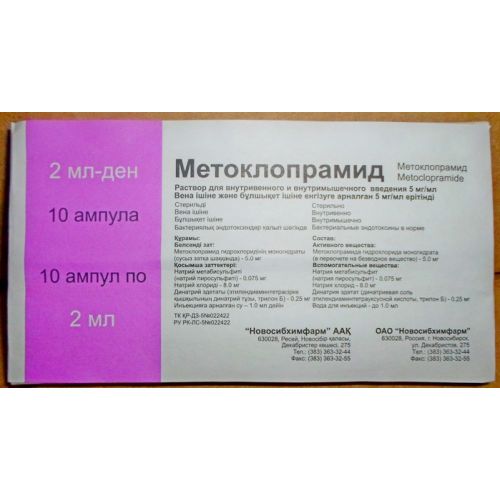
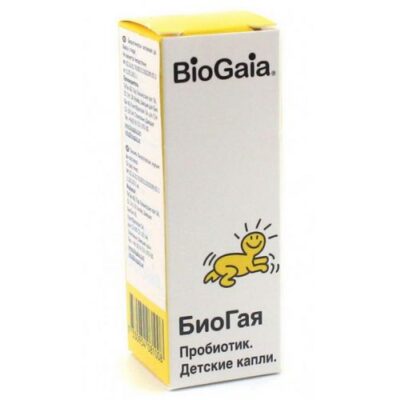
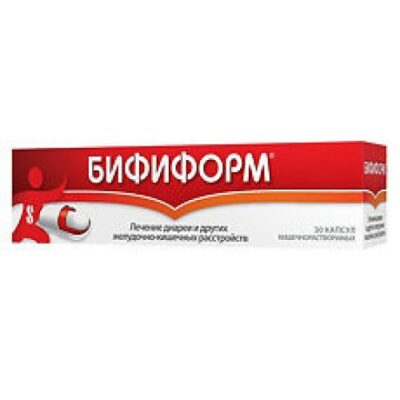
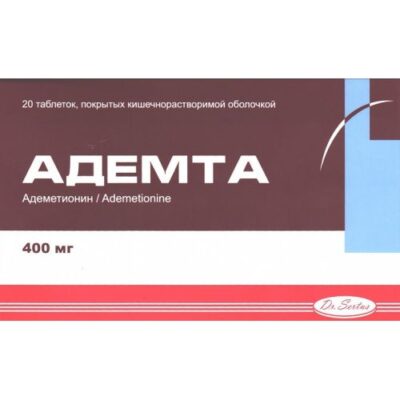
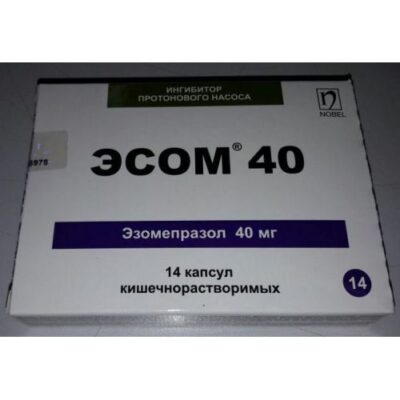


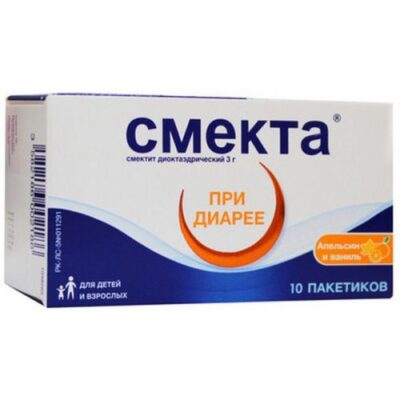

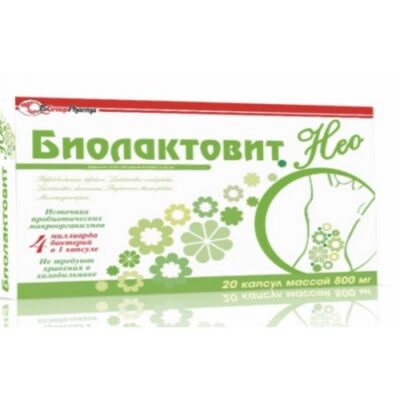
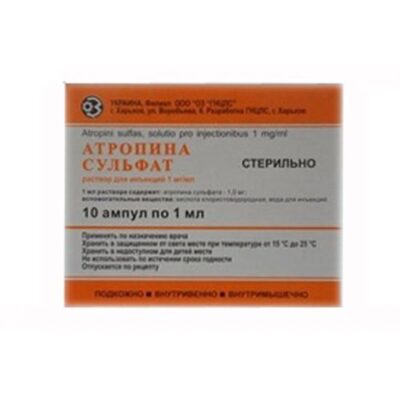






Reviews
There are no reviews yet.